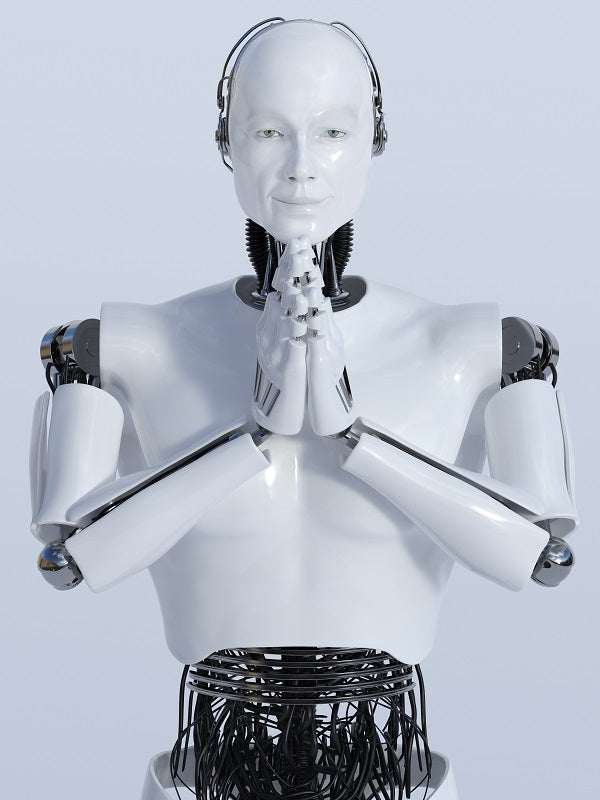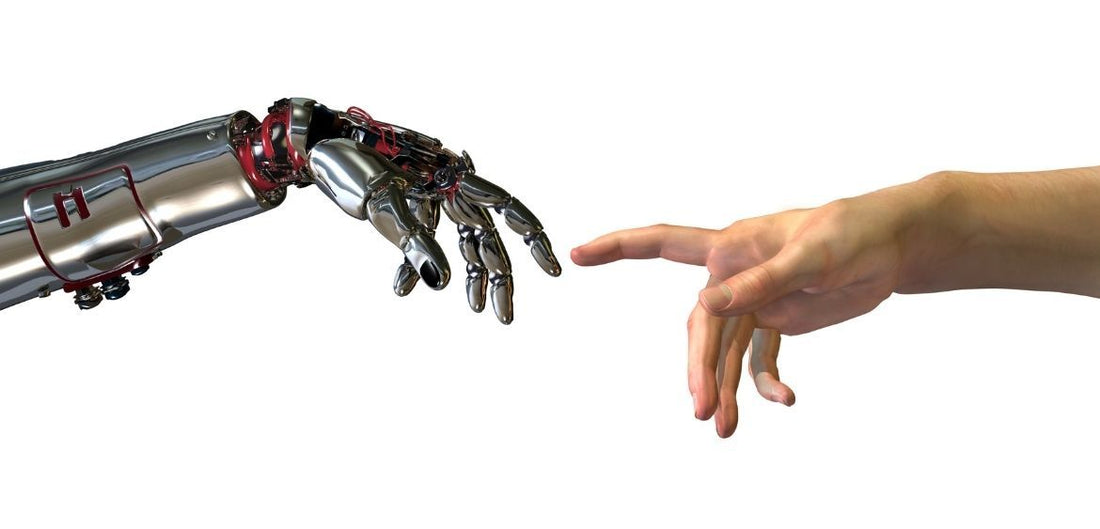Modern robotic technologies is an extremely dynamic branch of science, that develops rapidly and brings interesting break-through innovations almost every year. Robots are commonly used in our day to life to do all sorts of things. Human-like machines are implemented everywhere from medicine to householding and manufacturing. These robots can vary in their characteristics, functions, and outlook; some of them range from rather primal and simple in construction to very complicated and almost indistinct from humans. As of now, creating robots that look like humans is the main goal of robotics all around the world.
Robots in Real Life
Robots have quite a wide scope of application. They can be useful in almost every possible area of life.
Robots in Medicine
Robots have been used for treating disabled people for a long time now. In particular, the process of production of up-to-date prostheses and artificial limbs is highly dependent on robotics. The prostheses that meet today’s high standards of medicine are movable, mobile, flexible, and serve as qualitative replacements for lost limbs. Many of these artificial body parts are manipulated directly by the electronic impulses of the patient’s body. But this isn’t all that robotics can offer – robots can be found in surgical wards, as well as many educational institutions for doctors, and the range of their possible applications only grows.

Robots in the Aerospace Industry
No one will argue that robots should find their place in future space exploration missions as an indispensable part of outer space-traveling crews. And even if we resort to history, we can already see that most of the space explorations were actually conducted with the help of robots, so this idea is not something new, either. We have numerous Moon Rovers, Mars Rovers, and avatar-robots working on the outer space for us. But the diversity of these machines doesn’t end on that, there are actually a lot of different types of robots designed specifically for the extreme conditions of the space. They can perform tasks inaccessible to humans or those that are just way too dangerous.
Independent Robotic Security Systems
The implementation of modern robots in the area of life concerning the security of humans has proved to be highly valuable. For example, there are robots that can locate and identify potential fire dangers and eliminate them, preventing catastrophes before they even happen.
And we shouldn’t dismiss the robots engaged in military services. They are used to conduct soldier training — despite not being designed reminiscent of human beings like other high-end robots, they are perfect at reproducing the behavior and reactions of a real person. Using these machines, military leadership creates situations and conditions that are extremely similar to real hostilities.
Robots can perform spying operations on different objects, not raising any attention to themselves. This way, they take some weight off the shoulders of law enforcement officers, allowing them to engage in other important tasks.

Robot Appliances in Households and Manufacturing
It is hard to imagine modern production facilities and manufacturing plants without all the robots that they are using. Usually, robots are responsible for the majority of work done on those plants. We talk about a massive number of operations requiring utmost accuracy of movement and numerous reiterations boiling down to a single continuous high-speed process — an impossible scenario for a human. Implementing robots can increase the production rates of entire manufacturing sectors freeing up human employees and allowing them to take over the other important objectives of the enterprise.
Robots are also often used in households to help the owners with their cooking, cleaning, and other routine work around the house. The most frequent are the robots-vacuum cleaners and robots-lawnmowers but there are also other machines that perform much more complicated tasks.

Robots in the Entertainment Industry
There are also robots engineered for the sole purpose of entertaining humans. Those are mostly children’s toys that can sing a song or make a few dance movements, radio remote control car toys, and some interactive games. The market even has the so-called real robots that can communicate using scripted speech patterns, so it seems that not all of them are made for children after all. Though, the only difference between the models for adult users and the ones for kids is the design and size of a toy.

Famous Robots
Hundreds of companies all across the world produce massive numbers of different kinds of robotic mechanisms every day. To make your robot stand out among the others, it has to be a real gem in the robotics realm. Here are some examples of such works, famous for their unique functions.
Asimo
This Japanese robot was developed by the Honda company. Honda has actually been quite an active player in the robotics realm since the 1980s. Their specialists were able to construct a robot that successfully occupied all the attention of the entire robotics sector of science. With the weight of 50 kilos and reaching 1,5 meters in height, this fella could move on its own avoiding different obstacles and executing additional scripted programs of actions such as serving a cup of coffee to a human.

VGo
This robot is being controlled over a Wi-Fi network and is a so-called telepresence device. It can communicate via a microphone, as well as hear and see its surroundings, which allows it to move around freely. The mechanism was developed specifically to serve disabled people who are unable to do everyday duties on their own. If you were to connect this robot to certain devices, it could be used as an independent portable camera. With the help of this technology, children who are currently homeschooling can listen to the school lessons from their homes.
Roboy
This robot was developed by specialists from Zurich. It has flexible tendons, which creates a more anthropomorphic look. The designers tried to put together a face that would express emotions, along with soft material used as a skin, it looks decent. This realistic robot was initially elaborated as a companion for lonely people who require some attention from outside.
Kuratas
This giant robot weighs about 4,5 tons and reaches a fascinating 4 meters in height. Its movement is manipulated by a controller who is placed in a special cabin — but it can also be controlled remotely. The design of the robot immediately reminds of an anime character, a rather expected solution coming from the Japanese engineers.
iCub
One of the most advanced robots was built in Italy. From the outside, it is very reminiscent of a real person already. But if you take a deeper look at its functionality you will find that this robot is capable of recalling its own name and names of those who he speaks to, as well as the names of different objects. Moreover, it can adapt to its surroundings and move freely by itself.
Rollin’ Justin
Rollin’ Justin was developed by the German Aerospace Center. It is controlled via telepresence technology, with the program being remotely directed by an operator through the monitor screen. The robot comes in different model modifications, including the straight standing version.
What are Robots Made of
There are quite several different materials used to build a robot. The most frequent options include:
- Aluminum
- Steel
- Plexiglass
- Plastic
- Carbon fiber
- Synthetic rubber (used to represent artificial skin and muscle tissue in realistic robots).
The choice of materials depends directly on the specific functions of a robot and its working conditions. The worse the environment that a robot is going to be working in — the stronger and tougher the materials should be to resist wearing down.

Synthetic Robots
Construction of synthetic or “soft” robots is one of the high-priority directions of the modern sector of robotics working on realistic robots. These synthetic humanoids are generally defined by their smooth surface intended to resemble human skin. They are built on the bionic principles and designed specifically for use on working places in tight contact with humans due to much lesser possibilities of trauma as opposed to working close to an analogous mechanism of metal and hard plastic. Thanks to the artificial skin and muscle tissue used in the construction of the robots, the final result is highly anthropomorphic!
Robots vs Androids
Android robots are humanoid-robots that look exactly like real humans or at least designed to resemble them in their outlook and actions. Such models are currently in active development by many famous leading robot manufacturers all around the world. A normal robot, on the other hand, usually looks less like a human and has much fewer functions.
Robots have proved to be useful in situations when you need to get some uncomplicated repetitive work done fast when you need to perform high accuracy operations or lift heavy objects. An android robot is a type of robot you can assign operations requiring intellect to, it can deal with tasks such as communicating or providing help directly to a person in different areas of life — its capacities are much more diverse as compared to ordinary robots designed to do strictly scripted work.

Companion Robot for Personal Interaction
Robots-companions are designed to provide useful socially-appropriate interactions in the real-world environment. The first and most important task of such a robot is to serve humans and help them get their routine done. Most and foremost, robots-companions, as follows from their name, were designed for people who require someone to be there for them, people with specific needs: elderly, disabled or autistic people. These robots can be of great help to those in need.
In recent years, human-looking robots are becoming more and more popular among enthusiasts and those curious enough to pay attention to the funny little robots sharing some human features and naturally arousing sympathy. The main function of these robots is to keep up conversations with anybody talking to them. They are a great means of communication for rich people who are, nonetheless, lonely and in acute need to share their thoughts.
There are also robots-companions that look like home pets available at the robotic market. Though, more often than not, they serve only as morale boosters having little practical application.

What is a Humanoid
Robots-humanoids are devices that at least partly resemble humans on the outside, even if they don’t have any special functions to back it up. Most of them are equipped with hands, legs, head, and even a face on it. Despite the fact that the concept of these robots comes from way back in the day, the most prominent achievements in this sphere were made in the last decade.
A real humanoid should not only resemble a person from outside but also has to have a range of autonomous abilities such as moving freely, listening, and speaking on its own. And perhaps the most important feature of a modern humanoid is the ability to refine its skills during the process of performing certain actions, just like a real person would do.
How to Make a Humanoid Robot
Versatile human-like robots are extremely complicated machines that require quite a lot of knowledge and experience to put together a decent model. The construction of such a robot must include the musculoskeletal system, mechanical limbs, systems of sound and environment recognition, as well as a neural-network capable of gathering and processing information from outside. The elements of appearance such as its skin and hair, are not necessary and serve more as an aesthetic part of the whole mechanism but can be dismissed.
Build Humanoid Robot
Most of the robots share some similarities. These include, first of all, agile bodies allowing them to move around freely. Some models have more movable elements in their bodies, some can move only the main parts, but it has to be enough to avoid a robot from tripping over obstacles. As a rule, the body parts are made of metal of plastic interconnected with a system of joints just like human bones are.
Robots move around by activating the right drivers at the appropriate time harmoniously. Keeping the robots from falling nose first on the ground is harder than it may seem, provided that it has to remain on its feet the whole time. Some use electric motors, linear actuators, and solenoids, others use hydraulic pneumatic systems.
A robot has to have a charging source to stay active. Most robots have integral batteries that can be charged from a power grid. Hydraulic models have pumps for creating tension, while pneumatic ones use tanks with compressed air or special compressors to do the job.
All the robot’s motors connect to power grids that charge electronic engines and solenoids directly. Everything connected to the grid is controlled by a computer that activates the necessary details and valves. The behavior of a robot can be altered easily just by changing the program it has installed in its system.
Although some models have the ability to hear sounds, see images, smell objects, and feel touching on their sensors, not every robot has such systems. But the absolute must for a modern robot is the ability to move — otherwise, it can not be considered a robot.

Future Humanoid Robots
At the moment, robotics has several different routes of development it can follow that are, according to the forecasts of the specialists in this realm, can become the main trends in the future of robotics as a whole. These include:
- Using new materials, namely galliot nitrate (in the production of transistors) and graphite (in the production of drive units);
- Using new sources of energy as well as the technology of its gathering and storing;
- Robots interacting with humans, for example, to manage unmanned aircraft traffic;
- Helping robots with navigation in extreme conditions;
- Increasing neural-network efficiency by boosting up the complexity of its structure and architecture;
- Creating possibilities to study algorithmic procedures and usage of cloud services for mass education to robots;
- Using artificial intelligence for perfecting movement patterns;
- Implementing robots in different areas of human life to increase their financial profitability;
- Concentrating on developing the abilities and quality of sensors.
Bearing in mind that the developments in all of the above-listed fields are currently being made, it is a fact that in the nearest future the world of robotics will surprise us with some high-class robots, unlike everything we have seen so far.
At the moment, human-like robots already do a lot of work in numerous areas of life. And in the future, those numbers only seem to grow. The specter of tasks robots can be used for will only increase along with their abilities. They will be used to do the jobs dangerous for humans, for the jobs that require scrupulously perform reiterating tasks, catering for elderly and children, educating children and adults, and many other things that can be completed by robots. And while doing all these jobs for humans, robots will be developing even further, which opens up more and more prospects for the future of robotics.




